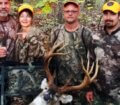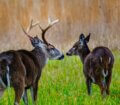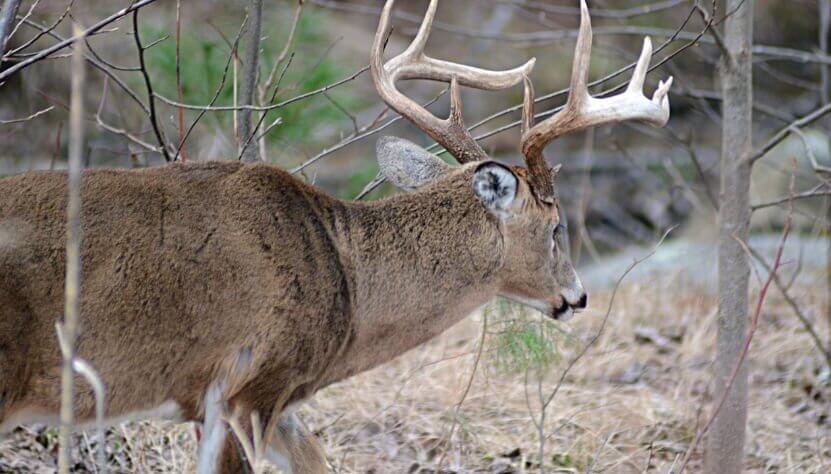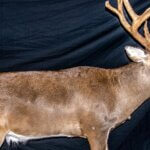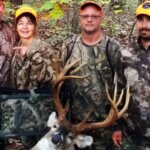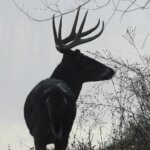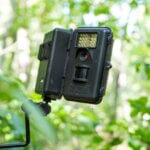Editor’s Note: Michael Perry of Vinemont, Alabama, a longtime, successful public-land hunter, says, “I don’t want to give the impression that I think I know everything there is to know about how to hunt and take mature public-land bucks successfully. However, my family has been hunting public lands for over 50 years and has taken some nice, older bucks. I’ve learned how to scout to find these mature bucks, how and when to hunt them and get older, heavy, well-racked bucks out of remote areas. Most of the big bucks I’ve taken on public lands, I’ve never even seen before until I’ve squeezed the trigger on my mechanical release, my muzzleloader, or my granddaddy’s .30-06 Mauser.
“In the 2021 deer season, I took a buck scoring 195-6/8 inches on a state WMA. In 1998, my brother Matthew had taken a 180-1/8 inch public-land buck. And a friend of my dad’s took a 170-inch buck in the 1970s on public lands. Over the years, I’ve taken 38 public land bucks, 8 points or better. I’ve kept meticulous records in my journals about how we’ve hunted these bucks, where we’ve hunted, and what has made us successful in taking older-age-class bucks on public lands. I hope my information will help you learn tactics to become more successful on the public lands you hunt in any state.”

According to Perry, “The number-one question other hunters always ask me about hunting public lands is, ‘What do you do if you shoot a big buck deep in the mountains, and you’re by yourself?’ I explain that I never worry too much about how much work will be involved to get a buck out of thick, steep terrain. I’ve learned that when hunting a big buck on a WMA, the main problem is finding and taking that buck. After the buck’s on the ground, then you can begin to think about how you’ll get him out of the woods, what equipment you’ll use, and who you’ll recruit to help you.”
Some of Michael Perry’s Hunting Tips:
- “I’ll shoot my bow out to about 40 yards five to six times a week before the season begins.
- “I’ll hand load all my ammunition to know that my shells are ready to go and will shoot accurately and go to the shooting range occasionally.
- “I’ll bow hunt each season, targeting an individual buck outside my main rut-hunting areas during the early season, mainly specific food sources close to thick cover and fresh buck sign. I’m confident with my bow and equipment and using a range finder on landmarks to mark shot distances.
- “I’ll realize that the less I see a buck during daylight hours, the more likely that the buck is an older-age-class buck.
- “I’ll recognize that older-age-class bucks move differently through terrain than younger bucks by only taking a few steps at a time, stopping, testing the air, twitching their ears, listening, and looking in all directions to spot danger.”
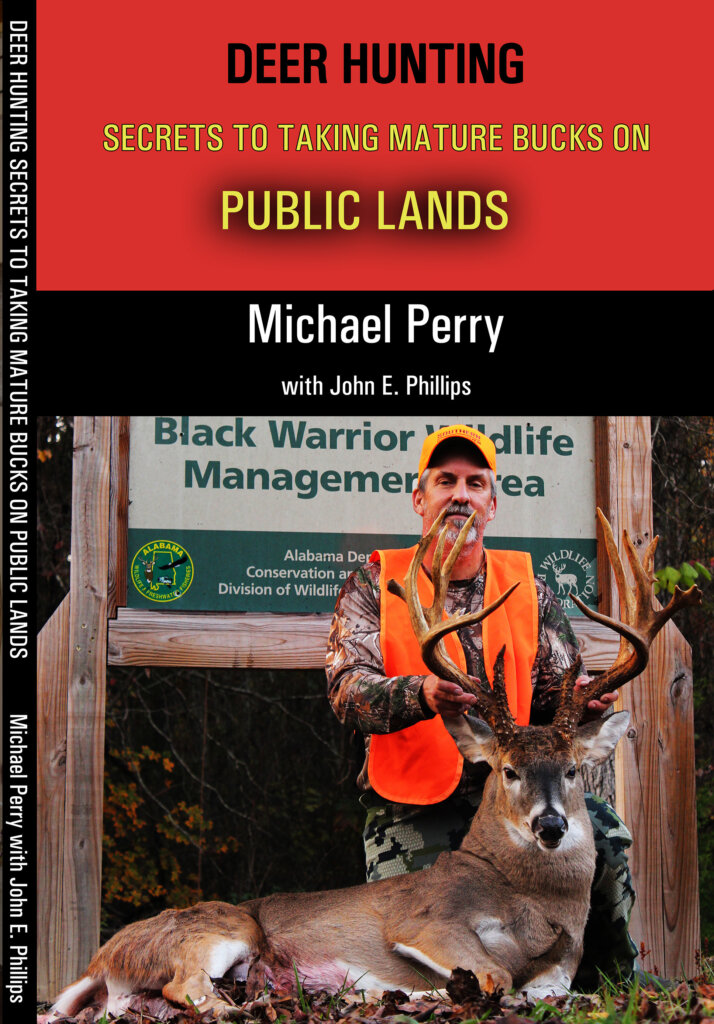

How to Hunt and Take Big Buck Deer on Small Properties
In this book, you’ll hear from 14 hunters who either have gained permission or leased properties as small as six acres to as much as 250 acres, and how they consistently take older-age-class bucks off these little lands.
VERSIONS: AUDIBLE, KINDLE & PRINT

Jim Crumley’s Secrets of Bowhunting Deer
Using a black magic marker and a gray work jumpsuit, Jim Crumley of Buchanan, Virginia, drastically changed the nature and purpose of hunting camouflage when he created the first sportsman’s camouflage – Trebark. Crumley’s love of bowhunting and his desire to be more invisible changed hunting clothing forever.
In this hunting guide, he shares the wisdom that he’s learned throughout his lifetime about how to be a hunter, how to find a deer lease, how to scout for deer, and more.
Special features include how to:
- Have a magic 60 acres to hunt
- Decide the best equipment to use
- Find deer year-round
- Locate land to hunt
- Know the best place to put your tree stand
- Get bucks within bow range
VERSIONS: AUDIBLE, KINDLE & PRINT

How to Hunt Deer Like a Pro
How do you know if the land you hunt has a trophy deer on it? Wildlife manager Bob Zaiglin, of Uvalde, Texas and Jim Crumley, the father of modern-day hunting camouflage, tells you how to find out. GPS can make finding and taking that trophy buck easier. This hunting guide will teach you how to hunt big bucks where no one else can find them, how to call deer, and how to become versatile as a deer hunter, so that if one deer tactic doesn’t work, another one will.
In the chapter, “How to find Bucks at Scrape,” Dr. Keith Causey, retired professor of Wildlife Science at Auburn University, describes the best way to hunt a scrape.
Brad Harrison of Neosho, Missouri, is a nationally-known videographer, professional deer hunter and master at calling deer. Another master is Will Primos of Primos Game Calls. These two experts will tell the best deer calls and when to use them in this book.
And for over 20 years, Bo Pitman, lodge manager of White Oak Plantation, has been studying deer movement patterns. He explains what types of conditions are best for predicting deer movement.
VERSIONS: AUDIBLE, KINDLE & PRINT

Deer hunting and deer hunters are drastically changing each year. To learn new techniques for hunting deer and have more places to hunt, I’ve interviewed some of the best deer hunters in the nation and share their tactics in How to Hunt Deer Like a Pro: Volume II.
In Chapter 10, Jacob Lamar tells you his tactics for consistently taking older-age-class bucks on public lands in several states. Chapter 11, Bob Walker explains how to find places on public lands where you can hunt that 99 percent of the other hunters never have considered hunting. The Bonus Chapter with David Ramey tells you how, where, when and with what equipment to take big Kansas bucks on public lands by hunting in 100-degree weather when others won’t hunt.
Chapter 13, Mark Drury, his family and his guests take mature bucks every season by having more small places to hunt rather than one large property. Drury explains the strategy of having satellite farms to hunt that only may be 50-150 acres each or less. Chapter 15, Pat Reeve, who hunts far-northern states and Canada, says, “I don’t like hunting for mature bucks until the weather is 20 degrees or less.” Chapter 4, Dr. Larry Marchinton says that funnels are the most-reliable stand sites to hunt for big bucks and tells why.
VERSIONS: AUDIBLE & PRINT
Tomorrow: Identifying the Timing of Rutting Public Land Deer

